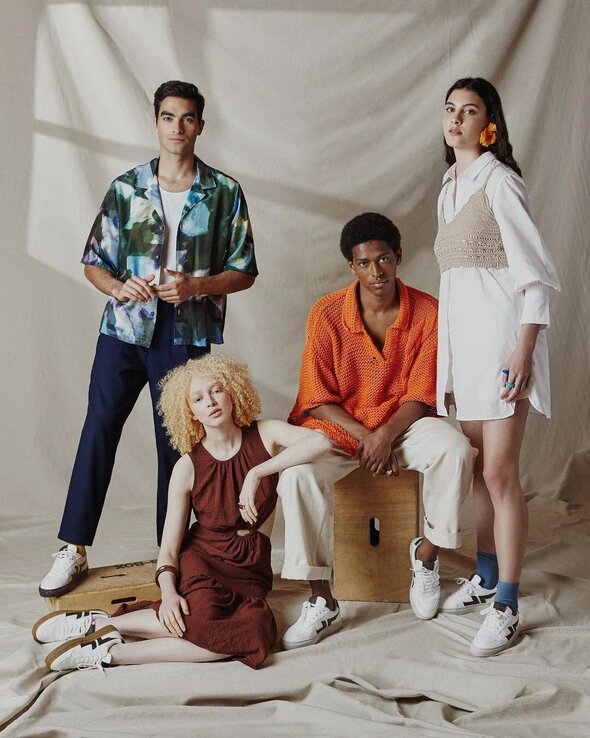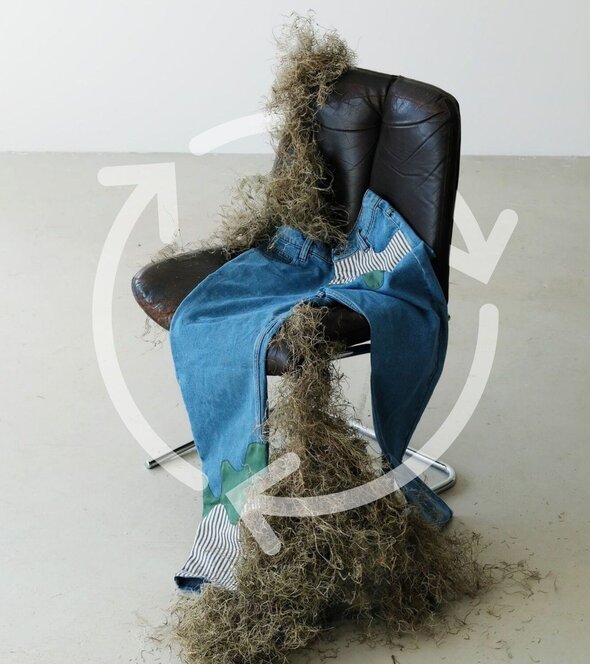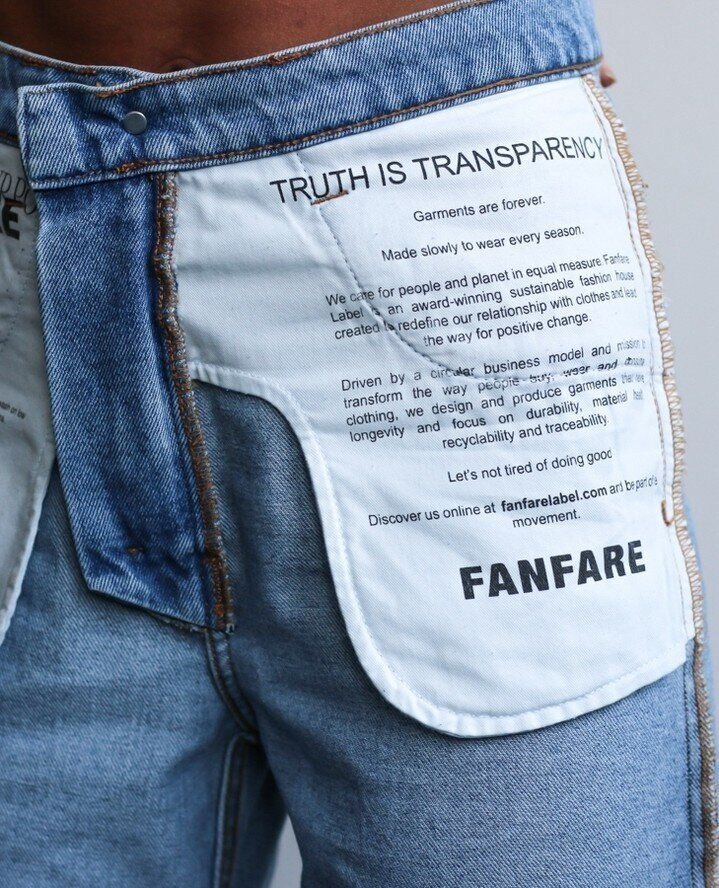Hey fashion, it’s time for a new look!
Fashion has long been a medium for creative expression, enabling us to showcase our identities, beliefs, and personal style. Beyond providing protection, the clothes we wear communicate who we are to the world. But for an industry with a reputation for being ‘ahead of the curve’, fashion’s global systems are stuck in outdated practices.
The trend-cycle has accelerated far beyond traditional seasons and in turn we’ve been accepting a perpetuating ‘use and toss' mentality, fuelled by consumers' thirst for newness and driven by a race to the bottom business approach. But environmental limits are closing in.
Depletion of natural resources, environmental degradation, human and animal exploitation, and a global conveyor belt churning out 100 billion new garments every year, leaves much to be desired for this “innovative” industry. As policy-makers crack down on unsustainable practices and consumers seek to get their fashion fix in ways less harmful to the planet, the industry is gearing-up for an overhaul.
The linear 'take, make, waste' fashion system is simply not cutting it anymore. It's time for a serious rethink about how we design, produce, use, and dispose of our clothes.
Fashion’s new paradigm: a trend we can get behind
Friction between fashion’s operations and the natural world is calling into question the viability of the linear clothing model. Most efforts to reduce fashion’s environmental impact focus on slowing down this linear approach rather than addressing its core issues. So, how do we rewire the relationship between fashion and nature to work together harmoniously? Ironically, the answer has always been right in front of us - woven into the fabric of our world.
In nature, ‘waste’ doesn’t exist, as everything is reused within a full self-recycling ecosystem. It seems only logical then that we should mimic nature! Reframing waste as a misplaced resource for potential value creation allows us to envision a new fashion paradigm that recaptures 'waste,' reuses it repeatedly, and eventually returns it safely to the biosphere. Defined as a circular economy, it entails a collaborative network of stakeholders, systems, practices and ideas that result in a fashion system which not only mitigates but reverses its environmental impact.
Making fashion circular(ish)
There are clear environmental and economic opportunities at every stage of the fashion supply chain to implement circularity, with benefits to be had for businesses of all sizes.
It’s exciting to see the early growth of circular-ish systems emerging, such as resale, rental, clothing take-back schemes and recycling centres. There’s also important groundwork being done by independent designers and artisans whose small scale, often localised operations lend themselves more easily to adopting circular principles. But as global fashion brands have the biggest impact on the planet, they’ll also be the ones who are most heavily penalised by new policies and legislation that aims to crack down on unethical, wasteful and unsustainable practices. These big players must comply or pay the price, which makes aligning with circularity therefore not only desirable but necessary.
Not only must we redesign future products, we must also revamp the systems that deliver and sustain them. Circular business models like rental, resale, repair, and remaking help keep products in use, enabling brands to generate revenue without producing new clothes. These models present an opportunity for innovative and improved growth in the fashion industry. However, there’s still work to be done to close the loop on these channels. For example, garments sold via resale have an extended lifecycle, but what happens to them beyond that? Will they be resold again? Will and can the materials be recaptured or upcycled? Will they end up in a landfill? Solutions can be found in collaborative efforts and innovative technological solutions, like integration of AI.
So far, scaling circular solutions for businesses has proven to be challenging. Brands often find themselves juggling multiple third-party platforms for various services, leading to complexity and high costs.
Our AI-powered platform consolidates vital tools and services for a circular economy, streamlining processes, cutting reliance on multiple vendors, and simplifying operations, ultimately reducing costs. Tailored solutions facilitate a smooth transition to sustainable practices, while detailed analytics enable brands to monitor progress and make data-driven decisions that advance their circularity goals.
AI Solutions in Context
So far, scaling circular solutions for businesses has proven to be challenging. Brands often find themselves juggling multiple third-party platforms for various services, leading to complexity and high costs.
Our AI-powered platform consolidates vital tools and services for a circular economy, streamlining processes, cutting reliance on multiple vendors, and simplifying operations, ultimately reducing costs. Tailored solutions facilitate a smooth transition to sustainable practices, while detailed analytics enable brands to monitor progress and make data-driven decisions that advance their circularity goals.
AI Solutions in the Context of Fashion
The ReSOLVE framework, developed by Arup and the Ellen MacArthur Foundation, applies the core principles of circularity to six actions: Regenerate, Share, Optimise, Loop, Virtualise, and Exchange. CircKit's AI-powered technology presents significant opportunities to support and advance each of these channels. Here’s one example of it could enhance virtual fashion design processes:
It’s estimated that 80% of a product's environmental footprint is determined during the design phase, primarily through choices in materials and dyes. Simulate, a key feature of CircKit’s technology, empowers designers to assess and minimise a garment's environmental footprint before any samples or product lines are created. This includes evaluating material suitability for end-of-life processing, with real-time metrics illustrating the impact of design choices across 9 critical planetary boundaries.
This aligns with the Ecodesign for Sustainable Products Regulation (ESPR), being fully implemented by 2025, which establishes minimum design standards for all products sold within the EU. This regulation underscores the critical role of design in shaping sustainability outcomes, the need to integrate eco-conscious practices from the outset, and the importance of these practices as a vital cog within the wider circular fashion system.
Finding fashion’s new fit
As mounting social pressures, dwindling planetary health, and the emergence of new fashion regulations underscore the urgency of embracing circularity, it becomes clear that this isn't just a buzzword; it's a necessity for our collective future. By adopting circular practices, we can pave the way for a more sustainable and thriving fashion industry and planet.
Are you ready to join us in this transformative journey towards circular fashion? Whether you're a brand owner or work for a brand seeking to enhance sustainability efforts, CircKit's AI-powered tech solutions are here to support you every step of the way. Reach out to us at [email protected] to learn more and embark on the path to circularity today.



